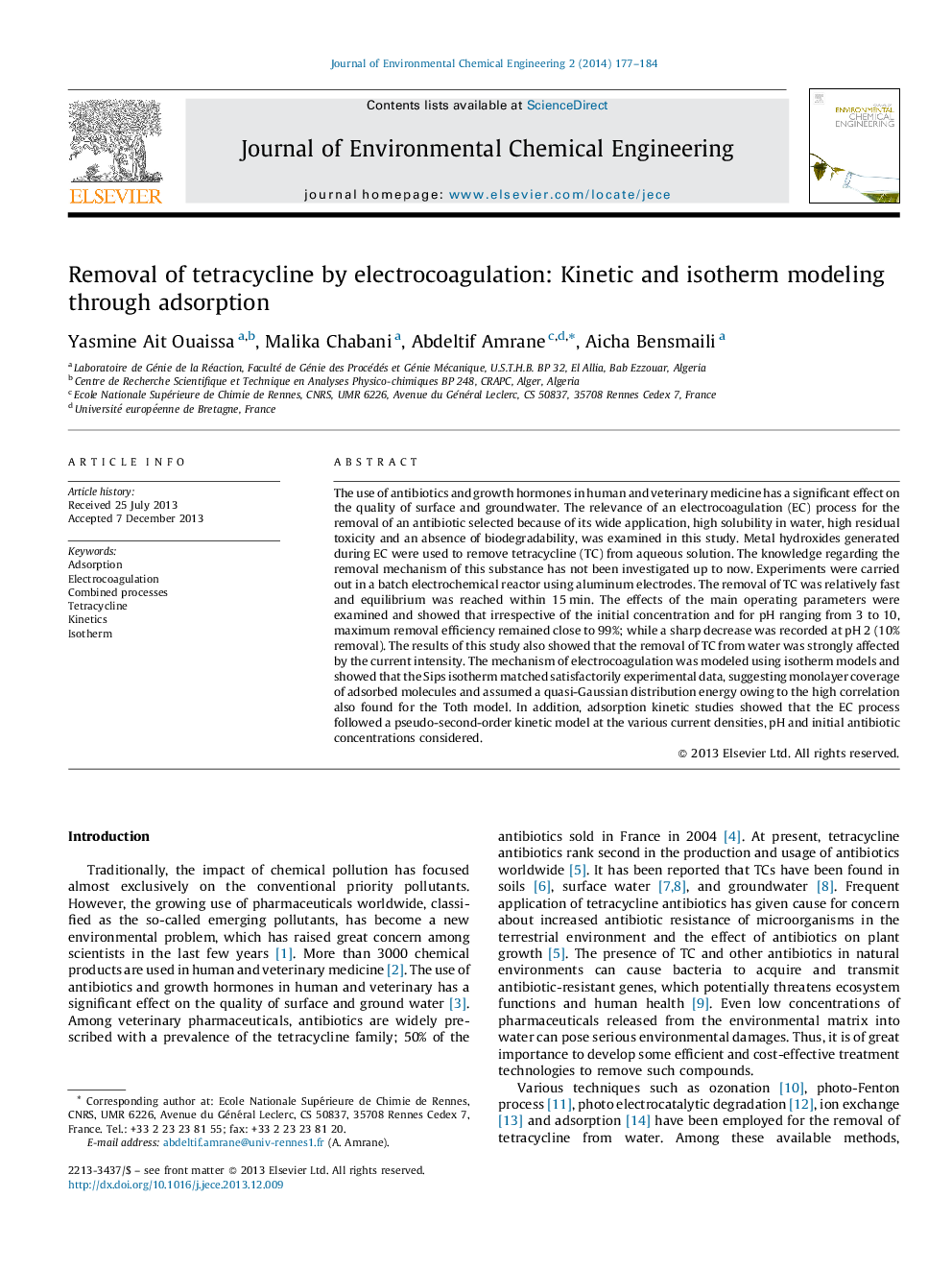| Article ID | Journal | Published Year | Pages | File Type |
|---|---|---|---|---|
| 222135 | Journal of Environmental Chemical Engineering | 2014 | 8 Pages |
•The relevance of an electrocoagulation process for the removal of tetracycline (TC) was examined.•Batch experiments were carried out in an electrochemical reactor using aluminum electrodes.•Electrocoagulation mechanism was modeled using adsorption kinetics and isotherm models.•The adsorption process followed a pseudo-second order model.•The Langmuir isotherm model matched satisfactorily experimental data.
The use of antibiotics and growth hormones in human and veterinary medicine has a significant effect on the quality of surface and groundwater. The relevance of an electrocoagulation (EC) process for the removal of an antibiotic selected because of its wide application, high solubility in water, high residual toxicity and an absence of biodegradability, was examined in this study. Metal hydroxides generated during EC were used to remove tetracycline (TC) from aqueous solution. The knowledge regarding the removal mechanism of this substance has not been investigated up to now. Experiments were carried out in a batch electrochemical reactor using aluminum electrodes. The removal of TC was relatively fast and equilibrium was reached within 15 min. The effects of the main operating parameters were examined and showed that irrespective of the initial concentration and for pH ranging from 3 to 10, maximum removal efficiency remained close to 99%; while a sharp decrease was recorded at pH 2 (10% removal). The results of this study also showed that the removal of TC from water was strongly affected by the current intensity. The mechanism of electrocoagulation was modeled using isotherm models and showed that the Sips isotherm matched satisfactorily experimental data, suggesting monolayer coverage of adsorbed molecules and assumed a quasi-Gaussian distribution energy owing to the high correlation also found for the Toth model. In addition, adsorption kinetic studies showed that the EC process followed a pseudo-second-order kinetic model at the various current densities, pH and initial antibiotic concentrations considered.
